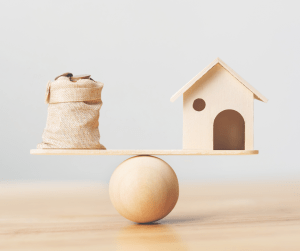The latest news for New Zealand Landlords and Tenants
First-time landlord’s checklist
You’ve found your first investment property and you’re ready to rent it out. But where do you start?
Finding tenants, making sure your home is up to standard, and making sure you meet your responsibilities can feel a little overwhelming. But we’re here to help you navigate all this new stuff with a first-time landlord checklist. Keep in mind that this is just a checklist to help you out when you’re starting out. There’s still a lot to learn if you’re going to be taking on tenants for the first time. So once you get through this, head back to our homepage to see what else there is to know.
Your first-time landlord’s checklist
- Make sure your property is up to standard
- Get landlord insurance
- Decide on the terms in your tenancy agreement
- Advertise your property
- Check potential tenants
- Choose how you’ll collect and track rent
- Sign the paperwork and do the first inspection!
1: Make sure your property is up to standard
In New Zealand, you can’t just rent any old house out. Legally, it has to meet certain standards if it’s going to be tenanted. Some of those standards include providing a clean home that has working smoke alarms with long-life batteries.
There are also new Healthy Homes Standards for landlords to consider. These came into effect in July 2019 as a way to improve the quality of rentals for the growing number of tenants. As cold, damp homes can be responsible for respiratory and other illnesses, these standards aim to make them dry and warm. They include things like:
- Having a fixed heater in the main living area that warms a room to 18˚C
- Insulating ceilings and underfloors
- Blocking off gaps, holes, and any draughts
And more. We recommend doing a quick Healthy Homes Quiz to see what rating your rental currently sits at. From here, you’ll have an idea of how much work you do or don’t have to do. For all rental standards you can also see the the Residential Tenancies Act.
2: Get landlord insurance
Getting insurance for your property is highly recommended. In the event that your property is hit by a natural disaster or even a disaster tenant, insurance will protect you and your property.
Tenancy laws also changed last year so that landlords are now required to include an insurance statement in their agreement. This is because laws also changed so that tenants are now liable to cover any careless damage they cause.
Tip💡 When you settle on an insurance provider, read through the ‘Landlord Responsibilities’ section of your policy. It’s really important that all of these make your checklist of things to do. Why? Because insurance is only valuable if it’s available.
3: Decide on the terms in your tenancy agreement
Your tenancy agreement lays out the conditions and expectations of living in your property. It also sets out the landlord’s responsibilities for the tenancy.
While there are legal must-haves in a tenancy agreement, you can also add terms. Keep in mind, these must also be terms that are legally allowed. Some terms you might consider adding are:
- No pets
- No smoking
These are two of the most common ones, but there are also other terms you can add.
How to create your tenancy agreement
Tip💡 For your very first-time being a landlord, it might be wise to use MBIE’s template for your tenancy agreement. This ensures you’re up-to-date with the latest requirements, and you’ll also get a better idea of what a lease generally includes.
4: Advertise your property
The faster you get your property on the market, the faster you’re going to find a tenant. Keep in mind that the better the advertisement and the bigger the portals that you advertise on, the more applications and inquiries you are going to get. Below are some articles that can help you gain maximum exposure when advertising your property:
- Trade Me Property or the Facebook Marketplace where should you list?
- What makes the perfect online advertisement?
5: Check potential tenants
Once you’ve got people interested in your property, it’s time to do some tenant checks. A tenant check usually involves checking the credit history of potential tenants. There are many online services where you can do this, as long as you have the tenant’s written permission. Remember to also ask for references and call these once your checks are back.
Tip💡 Use the Tenant Check pre-tenancy application form. That way you can be sure your potential tenant has given correct permission to run a background and credit check.
6: Choose how you’ll collect and track rent
You might not realise it yet, but this is one of your main responsibilities as a landlord. Firstly, because you need to know if rent is in your account or in arrears. Secondly, because you have legal obligations to meet here such as keeping rent records for 7 years. And finally, because your insurance policy may also have requirements around this. There are many options for collecting and tracking rent in 2020 that don’t involve a paper spreadsheet and a big chunk of your time. Find one that suits you and your tenant.
7: Sign the paperwork and do the first inspection!
Woo-hoo, you’ve found great prospective tenants and it’s time to make it official! Get that tenancy agreement you prepared earlier and make sure every tenant, and yourself, signs this. You must give your tenant a copy, and keep a copy for yourself. Ensure you have a safe place at home to put this in case you ever need it. We also recommend keeping a digital copy on your device.
Before your tenants move their stuff in, you’ll also need to do a move-in inspection. This involves going through the house with the tenants to record the condition of the property. If you use MBIE’s tenancy agreement template, there is a Property Inspection report at the very end. Use this to do your initial inspection and record any furniture or chattels that are included with the rental.
Remember 💡 Even though this is the first time your house is being tenanted, this first inspection is really important. If you forget to do it, you may not have grounds for getting bond money at the end if something is damaged.
Things to remember as a first-time landlord
Regular inspections 👀
If you’re a self-managing landlord, then it’s your responsibility to do regular inspections. There are rules around how often you do these, and what notice you need to give so make sure you’re all clued up and meeting your insurance obligations.
Good communication 👋
If you make it difficult for your tenants to contact you, you are less likely to hear about things that need to be fixed or any general problems the tenant has. At the same time, if you can’t get in contact with your tenant it’s going to be very difficult to inform them of things like inspections and repairs. We recommend asking your tenant at the start what the best way to reach them is. That way there’s no trouble getting in touch.
Meth checks
These are another routine check you should do before your tenant moves in and in-between tenancies. If you don’t check this between tenants, and then discover it further down the line, you’re going to have the almost impossible task of discovering which tenant was responsible. Check your insurance policy and look at your options for getting a meth contamination check completed in your area.
Renovations
As time passes, and your property gets older and becomes less modern, it’s worth keeping on top of things to ensure that everything is functioning as it should. If you look after your property, you are more likely to find tenants who will do the same.
There is a lot to know when it comes to renting. Whether you’re new to the game or not, renting regulations are always changing and landlords are constantly needing to stay informed about this.
For a more thorough list of what you should be doing as a landlord, please refer to Tenancy Services and remember to do all the tasks on your first-time landlord checklist. Good luck!




